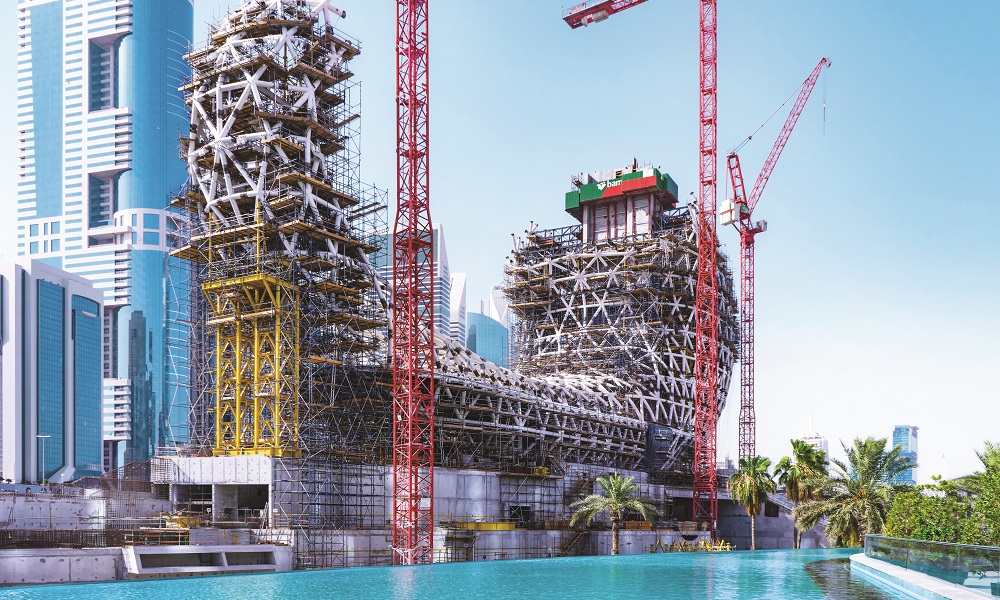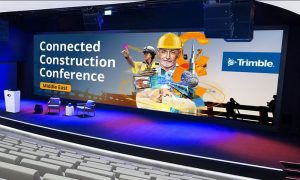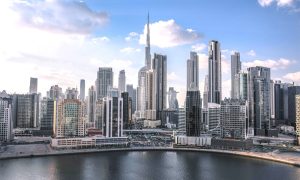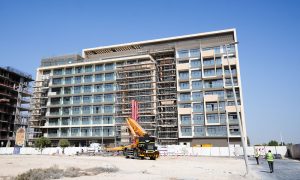A Future Perfect: How Wolffkran Arabia mobilised for The Museum of The Future
Dubai’s iconic Museum of the Future is an architectural landmark and a building for the ages. Anirban Bagchi takes an in-depth look at the tower cranes from Wolffkran which made the project possible

If you drive down the main highway and artery of Dubai, Sheikh Zayed Road, you will instantly be greeted by an architectural marvel – The Museum of The Future. Starting in 2017, Wolffkran Arabia implemented a lifting plan for this project, involving three tower cranes which were erected and then changed to meet the construction needs.
The cranes were put up in three phases. Additionally, as a crane solution provider, Wolffkran also provided the base design and procedures to erect and dismantle the cranes safely. They facilitated this process with the SMIE anti-collision system and in-house trained crane operators.
The first phase of the crane operations started in April 2017 when Wolffkran Arabia erected three main tower cranes in three days. They started off with a crane arrangement of three saddle jib cranes – all Wolffkran 6531.12 models with maximum load capacity of 12 tons – operating for the first six months. For identification purposes, the three cranes were called TC1, TC2 and TC3.
The TC1 and TC2 cranes were installed on 2.5m square bases, and the TC3 was installed on a 2.9m square base. Since Wolffkran’s crane bases can be exchanged between all its crane models, installing these bases at the start of the project, permitted for the jacking of the cranes as well as exchanging the cranes for different units on the same base as construction progressed.
The second phase of the crane operations began in October 2017 when the three saddle jib cranes were switched for two 28-ton 355B luffing jib cranes which was the new TC1 and TC2 and one 20-ton 8033.20 saddle jib crane which was the new TC3.
At the start of phase 2, the cranes elevated 11–12-ton panels but, as construction progressed, they were jacked up to lift up to 20-ton steel parts. The cranes were operated for about 20 hours every day, lifting between 9–15 tons of steel parts every hour. phase 2 was the longest stage where majority of the construction was done.
For the third and last phase the height under hook of the cranes was increased to 67.5m for TC1 and TC2 and 87.7m TC3 with the jib of TC3 being extended from 45m to 50m to facilitate lifting material of up to 4t.
The Museum of the Future project required free standing cranes because of the design of the building and its proximity to the Dubai Metro Red line, where the critical zone is 5m.
Martin Kirby, managing director, Wolffkran Arabia, explains: “We’ve got decades of experience in engineering and operating cranes in confined spaces, usually very close to railway lines and roads. We believe we were chosen for the job because only we could offer a solution to operate high, free standing cranes at the site. We engineered the lifting systems cost effectively with complete control of the operation and without the pressure to offer cheap products or reduced service and support.”
Wolffkran executed a twofold lifting plan for the Museum of the Future project, involving three tower cranes erected, swapped and jacked up in three different stages. As a crane solution provider, Wolffkran provided the base designs and method statement to erect and dismantle the cranes safely. Wolffkran also integrated the SMIE anti-collision system and handled the logistics involving mobile cranes in coordination with other divisions of Kanoo Group, specifically Johnson Arabia, which has been operating a fleet of mobile cranes for more than 20 years. Wolffkran employed its own in-house trained crane operators.
The first stage of the crane operations, which started in April 2017, had an initial crane configuration of three saddle jib cranes – all Wolffkran 6531.12 models with maximum load capacity of 12 tons – operating for the first six months. For identification purposes, the three cranes were named TC1, TC2 and TC3.
The crane farthest from the Emirates Towers Metro station (TC1) had a jib length of 50m and height under hook (HUH) of 32.6m. The crane closest to the Metro station (TC2) was erected with a jib length of 45m HUH of 23.6m. The crane at the centre (TC3) had a jib length of 50m and HUH of 42.8m.
Wolffkran erected the three tower cranes in three days, one crane a day. The TC1 and TC2 cranes were installed on 2.5×2.5m bases, and the TC3 was installed on a 2.9×2.9m base. As Wolffkran’s crane bases are interchangeable among all its crane models, installing large bases, initially, enabled the jacking of the cranes as well as swapping the cranes.
Jeffrey Watson, operations director, Wolffkran Arabia, says: “We employed smaller saddle jib cranes to create the concrete podium with 2–3t lifts. During the first stage, the smaller saddle jib cranes enabled us to lift with high speed and efficiency while saving power.”
The second stage of the crane operations began in October 2017 when the three saddle jib cranes were replaced with two 28-ton 355B luffing jib cranes (TC1 and TC2) and a 20-ton 8033.20 saddle jib crane (TC3).
The TC1 and TC2 cranes had jib lengths of 50m and HUH of 45m. The TC3 crane had a jib length of 45m and HUH of 60.3m.
In the beginning of stage 2, the cranes lifted 11–12-ton panels. As construction progressed, they were jacked up to lift up to 20-ton steel parts. The cranes were operated for 20 hours every day, lifting between 9–15 tons of steel parts every hour.
The third and final stage saw the HUH of the cranes increased gradually to 67.5m (TC1), 67.5m (TC2) and 87.7m (TC3). The jib of TC3 was extended from 45m to 50m. As the project nears completion for opening in 2020, the cranes are lifting material of up to 4 tons, and the Wolffkran Arabia team is evaluating various scenarios for dismantling the cranes.
“We were thinking about dismantling the cranes before erecting them. Our method statement includes a detailed plan for dismantling the cranes after job completion. Planning the location of tower cranes should also take into account accessibility for mobile cranes for dismantling the tower cranes. We will miss seeing the Wolff red in the skyline as we drive through the area,” says Kirby.

















